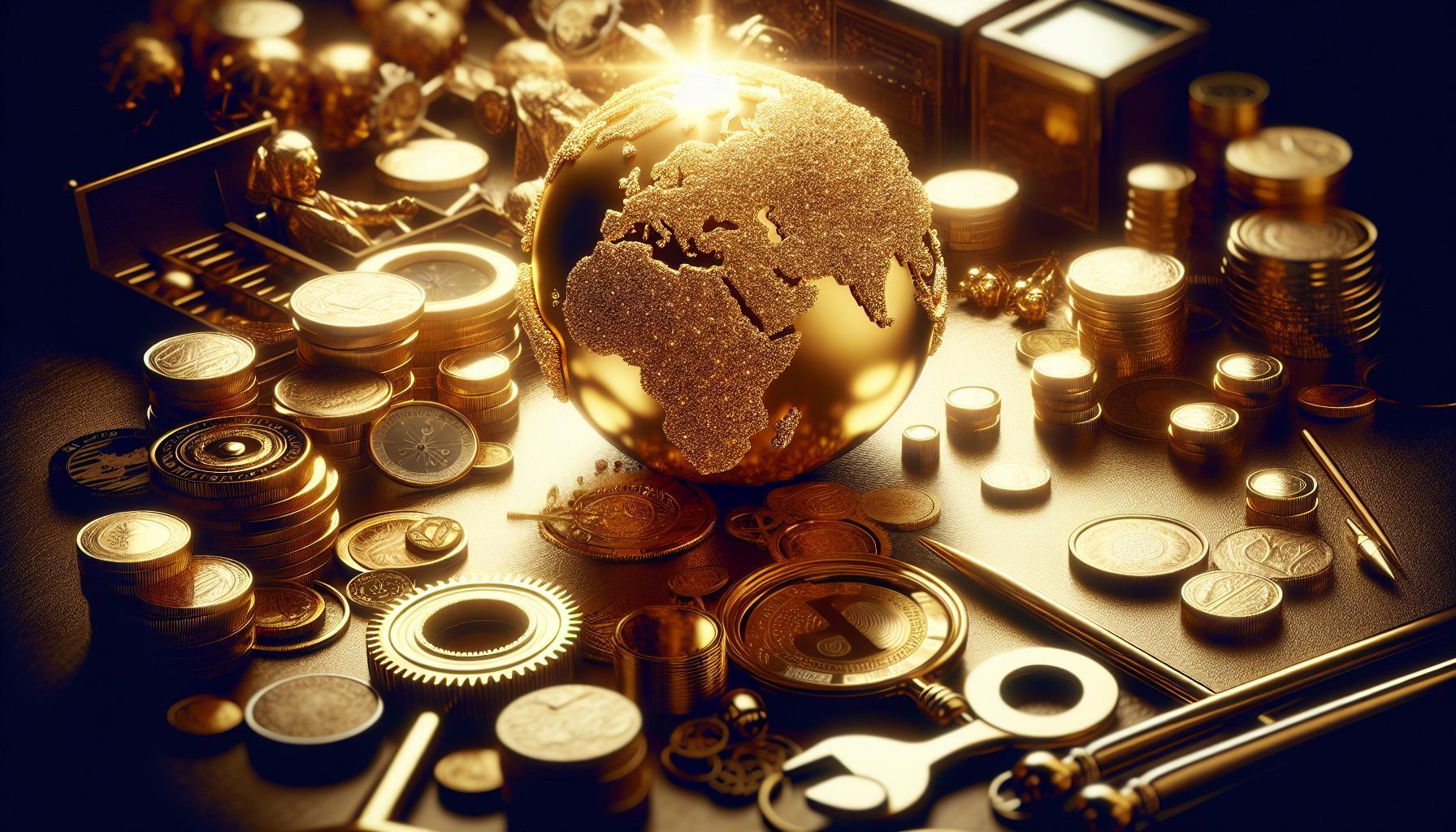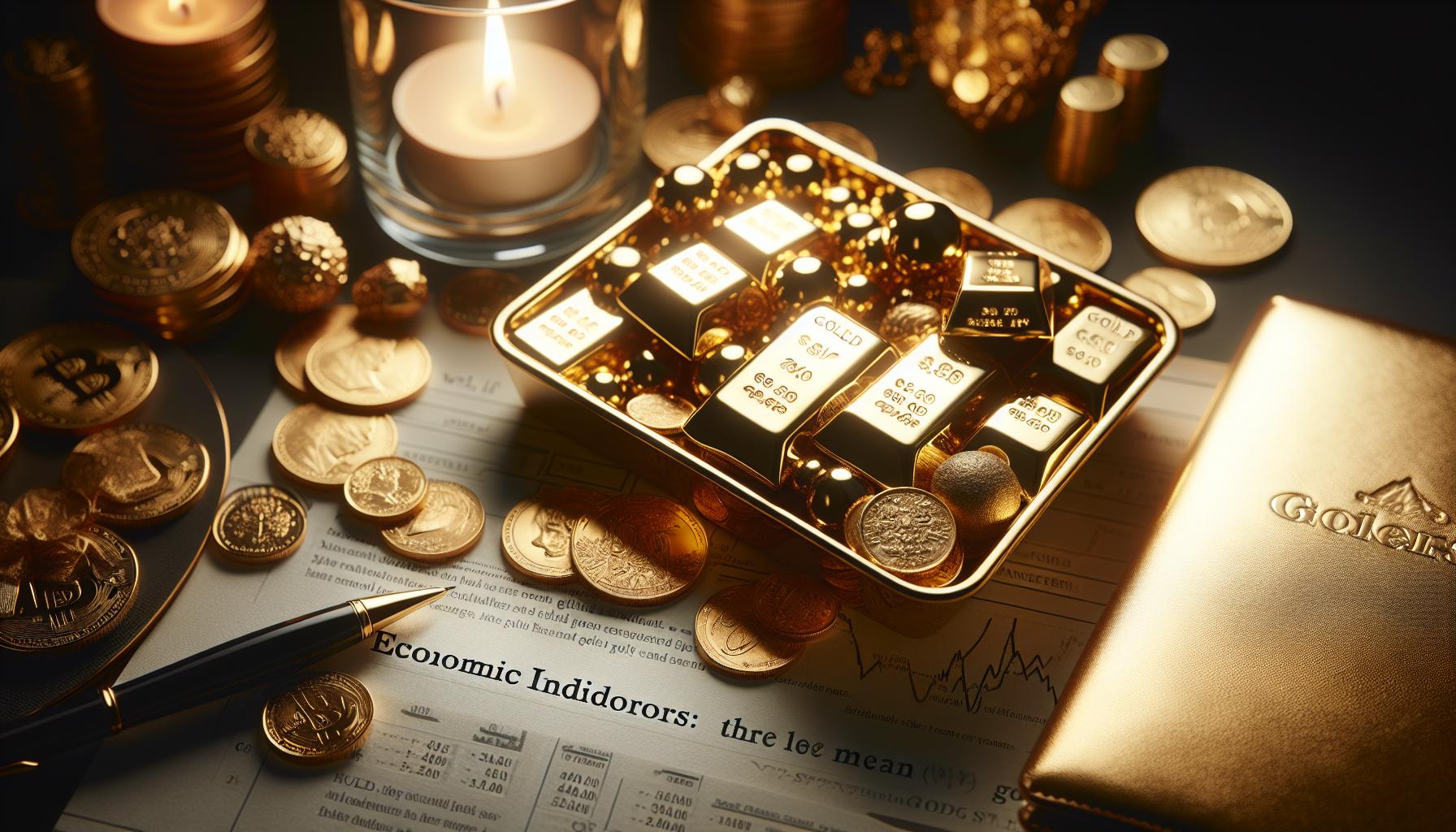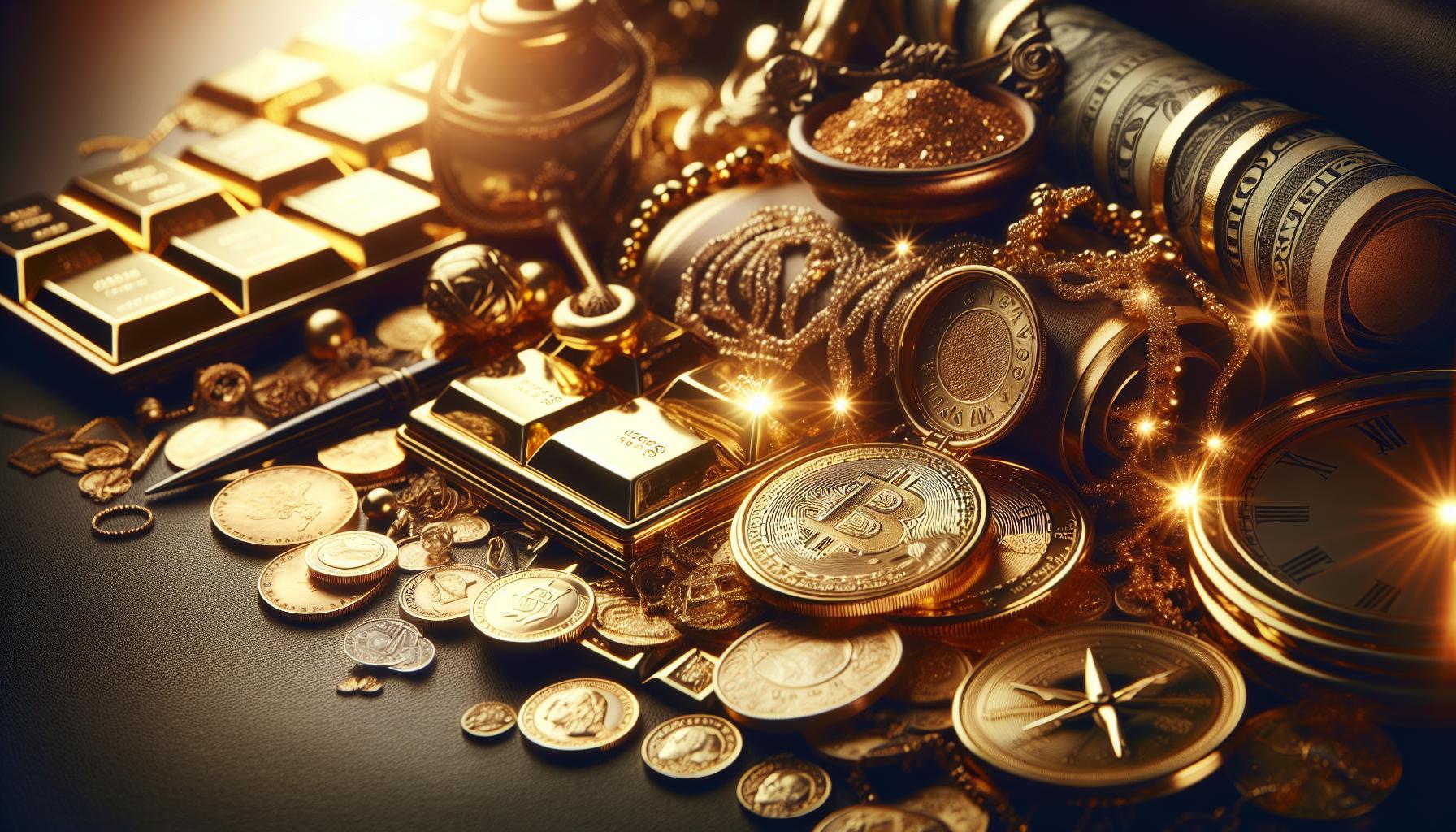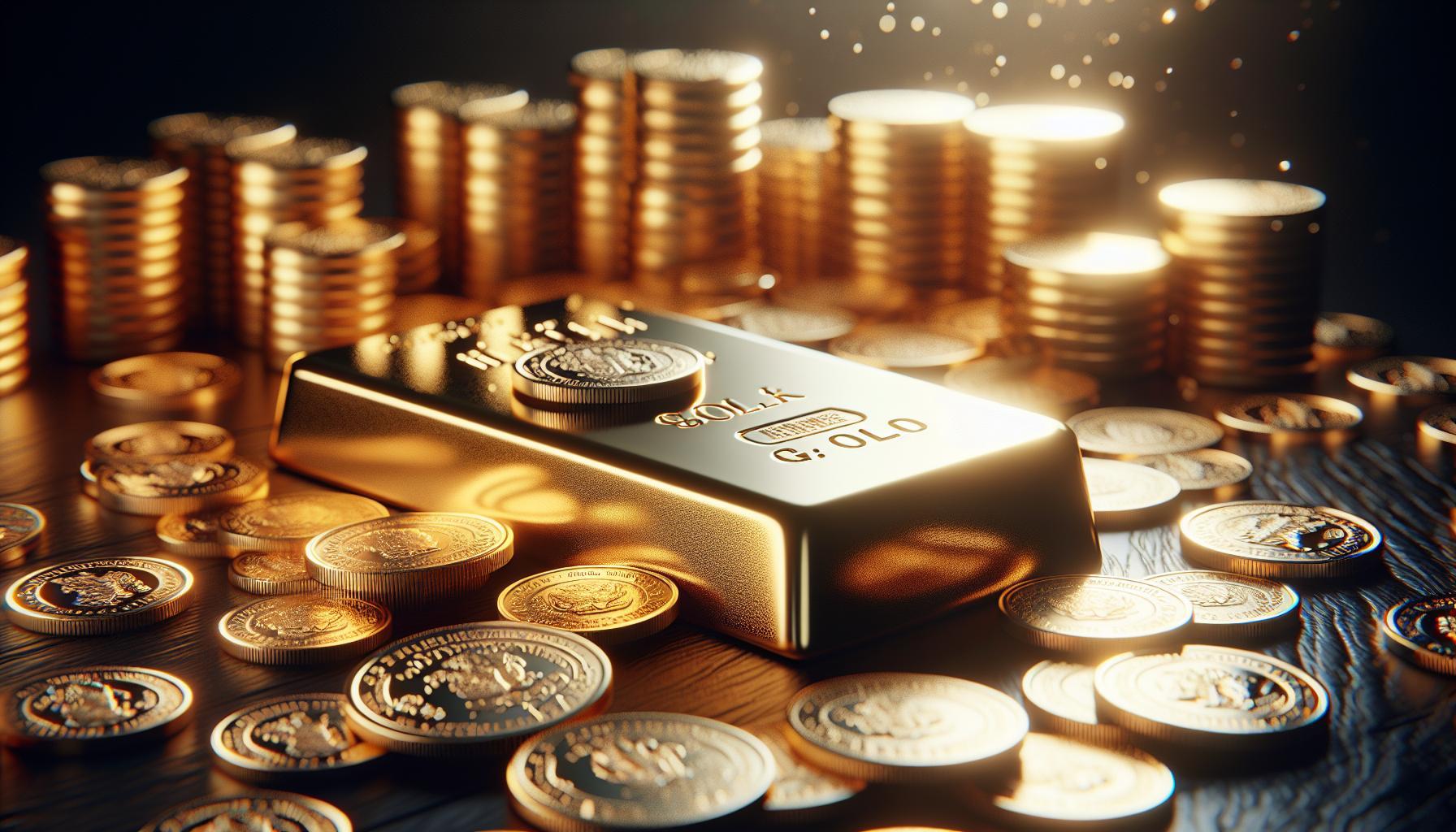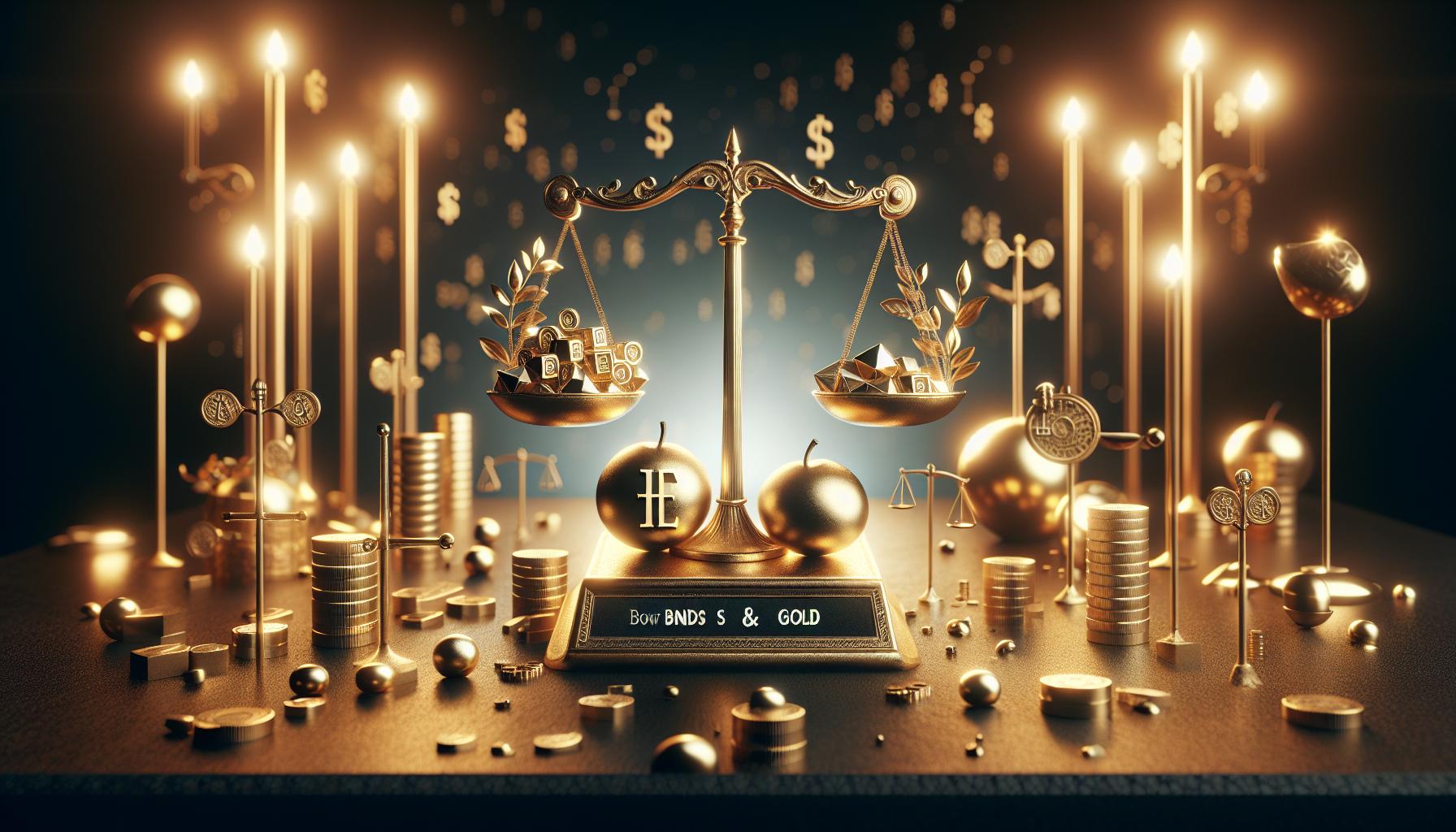In uncertain times,many turn to gold as a safe haven,but how significantly do global events steer its price movement? Understanding the dynamic interplay between geopolitical tensions,economic shifts,and market sentiment is crucial for investors and enthusiasts alike,as these factors can dramatically influence gold’s value in the marketplace today.
understanding the Factors That drive Gold Prices in today’s Market
Gold has long been viewed as a safe haven asset,often shining brightest during periods of economic uncertainty. As investors become increasingly wary of other investment vehicles, understanding the intricate mechanisms that influence gold prices is crucial. In today’s dynamic market,various global events play a significant role in dictating how much the current gold price fluctuates,making it essential for investors to stay informed about these driving factors.
Key Global Events Impacting Gold Prices
Factors that drive gold prices are multi-faceted,often stemming from a complex interplay between economic indicators,political shifts,and market sentiment. Below are some of the primary influences that shape today’s gold pricing:
- Economic uncertainty: Economic downturns or projections of slow growth frequently enough propel investors toward gold, driving demand and consequently raising prices.
- Interest Rates: Changes in interest rates directly impact the opportunity cost of holding gold. Lower rates tend to make gold more appealing as a non-yielding asset.
- Inflation: Gold is traditionally seen as a hedge against inflation.When inflation rises, the purchasing power of currency decreases, resulting in increased investment in gold.
- Geopolitical Tensions: Events such as military conflicts or diplomatic disputes can trigger a flight to safety as investors flock to gold, further elevating its price.
- U.S. Dollar Strength: Gold is typically inversely correlated with the U.S. dollar. A weaker dollar makes gold cheaper for foreign investors, thereby boosting demand and prices.
Real-World Examples of Influences on Gold Prices
To illustrate these factors in action, consider recent trends observed during geopolitical events. As an example, during the onset of the COVID-19 pandemic, global economic fears led to a surge in gold prices, reaching historic highs as investors sought protection against potential market crashes. Similarly,the ongoing geopolitical tensions in Eastern Europe have seen prices spike as uncertainty looms large over global supply chains and trade agreements.
Moreover,central bank policies regarding interest rates further exemplify this dynamic. The Federal Reserve’s decisions to lower rates can ignite a surge in gold investment, as low returns from bonds and savings lead investors to turn to gold as a more attractive alternative. This interplay showcases how closely interlinked global events and economic policies are with gold pricing.
Keeping track of these influences is vital for anyone looking to invest in gold or understand the fluctuations in today’s market. by being informed about the potential impacts of economic policy, currency fluctuations, and international events, investors can make better decisions aligned with their risk management strategies.
The Role of Geopolitical Events in Shaping Gold Value
The connection between geopolitical events and the fluctuations in gold prices is both intricate and fascinating.Historically regarded as a safe-haven asset, gold has often reacted to the winds of global uncertainty.For instance, during times of conflict or political instability, investors typically gravitate toward gold, seeking to protect their wealth. This relationship raises a compelling question: how significantly is the price of gold influenced by overarching global events?
Understanding the Dynamics
When individual nations experience political turmoil, or when tensions mount between global powers, investors’ confidence in traditional equity markets usually wavers. Rather, they frequently enough look for refuge in gold.This preference can lead to:
- Increased Demand: A spike in demand due to fears surrounding a potential economic collapse or military conflict often propels gold prices upwards.
- Market Volatility: Geopolitical tensions typically contribute to increased market volatility, causing sharp spikes or dips in gold prices as reactions unfold.
- Inflation Worries: Events contributing to inflationary fears, such as economic sanctions or trade wars, further enhance gold’s appeal as a hedge against inflation.
Key Examples of Geopolitical Influence
Past precedents illustrate the powerful influence of geopolitical events on gold pricing. Notable events include:
| Event | Year | Gold Price Movement |
|---|---|---|
| Sept. 11 Terror Attacks | 2001 | Gold prices surged from $265 to $400 within months. |
| 2008 Financial Crisis | 2008 | Gold reached an all-time high of $1,000 amid global financial uncertainty. |
| Brexit Vote | 2016 | Gold prices spiked by 8% as markets reacted to the outcome. |
These events demonstrate that gold’s value often acts as a barometer for global sentiment. Traders and investors closely monitor news channels, economic reports, and international developments, fundamentally recognizing that geopolitical events can lead to significant changes in gold value.
Strategies for Investors
To navigate the volatile waters of gold investments influenced by global events, consider the following strategies:
- diversification: Don’t rely solely on gold; include various assets in your portfolio to minimize risk.
- Stay Informed: keep abreast of geopolitical news and economic indicators to make informed decisions.
- Use Technical Analysis: Utilize charts and market trends to identify potential entry and exit points in gold trading.
Understanding how much today’s gold price is influenced by global events allows investors to anticipate market reactions and seize opportunities when they arise.
Economic Indicators: what They Mean for Gold Investors
Gold has long been viewed as a safe haven asset, especially when economic uncertainty looms. Understanding economic indicators is crucial for gold investors, as these metrics can significantly influence market demand, investor sentiment, and ultimately, the price of gold. With fluctuating global events impacting these indicators, gold investors must stay informed to navigate potential market changes effectively.
Key Economic Indicators to Watch
Several economic indicators serve as barometers for gold prices. Here are some pivotal ones to consider:
- Inflation Rates: Rising inflation often leads investors to seek refuge in gold, wich traditionally retains value better than fiat currencies.
- Interest Rates: Lower interest rates tend to weaken the dollar, making gold more appealing as a non-yielding asset.
- Geopolitical Stability: Global tensions or crises frequently enough drive up gold prices as investors flock to safety.
- Employment Data: Strong labor market statistics can indicate a robust economy, potentially reducing gold’s appeal during stable times.
The Interplay Between Economic Events and Gold Prices
To see how these indicators manifest in real-world scenarios,consider the impact of a recent economic downturn. Reflecting on data during the COVID-19 pandemic, the uncertainty surrounding global markets led to a surge in gold prices. Economic indicators such as unemployment rates skyrocketed, and central banks slashed interest rates to stimulate growth. As a result, many investors turned to gold, recognizing how much today’s gold price can be influenced by such significant global events.
Practical Steps for Investors
For those looking to leverage economic indicators in their gold investment strategies, consider these actionable steps:
- Stay Informed: Regularly monitor reports from reliable financial news sources or economic calendars that track inflation, interest rates, and geopolitical events.
- Diversify your Portfolio: Balance your investments across different assets while keeping an allocation in gold to hedge against economic volatility.
- Utilize Technical Analysis: Learn to read price charts and patterns that can indicate potential shifts in gold prices related to economic data releases.
Understanding how much today gold price is influenced by global events can arm investors with the knowledge needed to make informed decisions, ensuring they are well-positioned to take advantage of opportunities in the market.
The Impact of Currency Fluctuations on Gold Prices
Currency fluctuations are a significant player in determining the price of gold. Often viewed as a safe haven during times of economic uncertainty, gold’s value can be heavily influenced by shifts in the global currency market. As investors seek refuge from volatility or instability in currency values—notably the U.S. dollar—this precious metal often experiences price surges or declines accordingly.
how Currency Strength Affects Gold Prices
When the U.S.dollar strengthens, gold prices typically experience downward pressure. this inverse relationship occurs because gold is priced in dollars. A more robust dollar makes gold more expensive for buyers using other currencies, thereby reducing demand. Conversely, when the dollar weakens, gold becomes relatively cheaper, driving demand and pushing prices higher.
- Example 1: In 2020, during the height of the COVID-19 pandemic, gold prices soared as uncertainty around the dollar grew, largely due to stimulus measures and concerns regarding inflation.
- Example 2: Conversely, in 2017, when the dollar strengthened due to interest rate hikes by the Federal Reserve, gold prices dropped significantly.
global Events and Their Immediate Influence
Numerous global events can trigger fluctuations in currency values, subsequently affecting gold prices. Political instability, trade tensions, and economic crises can lead to a flight to safety, causing currencies to fluctuate wildly. as investors flock to gold in response to such events, they amplify the impact of currency movements on the metal’s pricing structure.
For instance, during Brexit negotiations, the British pound experienced significant drops, leading to an increased demand for gold among UK investors. As they sought to hedge against the fallen currency value, gold prices in pounds surged. Such instances underline the intricate relationship between global events, currency fluctuation, and gold pricing.
| Event | Currency Impact | Gold Price Reaction |
|---|---|---|
| COVID-19 Pandemic | U.S. dollar weakens | Gold prices increase to all-time highs |
| U.S.-China Trade War | volatility in major currencies | Increased demand for gold, rising prices |
| Geopolitical Tensions | Strengthening dollar amidst uncertainty | Short-term price dips followed by recovery |
understanding how much today gold price is influenced by global events requires a keen awareness of the relationship between currency fluctuations and the factors that drive them. By analyzing market trends and staying alert to potential economic changes,investors can better strategize their decisions in the precious metals market.
How Inflation and Interest Rates Influence Gold’s Appeal
Gold has long been regarded as a safe haven asset, particularly in times of economic uncertainty.Its historical performance showcases a clear relationship with inflation and interest rates, making it a crucial component for investors seeking to hedge against financial instability. As global events unfold, understanding how much today’s gold price is influenced by such factors becomes increasingly essential.
Inflation’s Impact on Gold Value
When inflation rates rise, the purchasing power of currency declines, often leading investors to seek refuge in tangible assets like gold. This is because gold is perceived as a hedge against inflation; as the cost of living increases, gold typically maintains or boosts its value.During inflationary periods,investors anticipate that fiat currencies will lose value,causing an uptick in demand for gold,which can lead to higher prices. The correlation between inflation and gold prices has been documented through various historical data.
- Historical Context: In the 1970s, the United States experienced soaring inflation, which coincided with significant increases in gold prices.
- Current Trends: Investors frequently enough monitor consumer price index (CPI) reports to predict potential inflation movements and gauge gold’s future performance.
- Investor Behavior: When inflation fears rise, many turn to gold, thus driving up its demand and price.
interest Rates: The Double-Edged Sword
Interest rates significantly affect the gold market, often creating a tug-of-war between opportunity costs and safe-haven demand. When interest rates climb, the yields on cash, bonds, and other interest-earning assets become more attractive, leading some investors to divest from gold. Conversely, when rates are low, gold shines brightly, appealing to those seeking to preserve wealth without the yield that comes from other investments.
| Interest Rate Environment | Gold Price Trend |
|---|---|
| Low Interest rates | Increases in Gold Demand |
| High interest Rates | Potential Decrease in Gold Appeal |
In recent years, central banks worldwide have adopted low interest rate policies to stimulate growth. This environment has generally favored gold prices, as the opportunity cost of holding non-yielding gold diminishes. As market conditions evolve, keeping an eye on both inflation trends and interest rate announcements is vital for understanding how much today’s gold price is influenced by global events. This astute awareness can empower investors to make informed decisions aligned with their financial goals.
Analyzing Historical Events and Their Effects on Gold Trends
Gold has long been regarded as a safe haven for investors during times of uncertainty,making its price highly susceptible to historical events that can alter market dynamics.Understanding how these events shape gold trends can help investors make informed decisions, especially in today’s volatile economic landscape. The historical price movements of gold often reflect societal reactions to crises, geopolitical tension, or significant economic shifts, showcasing a compelling correlation between world events and gold valuation.
Key Historical Events Influencing Gold Prices
Several pivotal moments in history illustrate the profound impact of global events on gold prices. here are a few significant examples:
- The 2008 Financial Crisis: The collapse of major financial institutions sent shockwaves through the global economy. As investors fled to safety, gold prices surged, reaching over $1,000 per ounce for the frist time in history. This crisis highlighted gold’s role as a protective asset during economic downturns.
- The COVID-19 Pandemic: As countries implemented lockdowns and governments unveiled massive stimulus packages, uncertainty fueled a new gold rally. By 2020, gold prices soared to record highs, exceeding $2,000 per ounce. Investors sought refuge in gold amidst fears of inflation and currency devaluation.
- Geopolitical Tensions: Events such as the ongoing conflicts in the Middle East, trade wars, or political instability in key regions have historically caused spikes in gold prices. During times of unrest,gold’s appeal as a non-yielding asset grows,driving up demand.
The Economic Indicators That Drive Gold Trends
Several economic indicators are closely monitored to gauge how current events might influence gold prices:
| Indicator | Description |
|---|---|
| Inflation Rates | Higher inflation erodes purchasing power, often leading investors to opt for gold as a hedge. |
| Interest Rates | Lower interest rates decrease the opportunity cost of holding gold, thus making it a preferred investment. |
| Currency Strength | A weaker dollar often results in higher gold prices, as gold becomes cheaper for foreign investors. |
| Stock Market Performance | In periods of stock market volatility or decline, gold typically experiences increased demand as a safer alternative. |
By examining these indicators in conjunction with historical events, investors can better predict how global developments may affect today’s gold price. Being aware of the intricate relationship between world affairs and gold valuation can empower market participants to navigate their investment choices with greater confidence.
The Psychological Aspect: Investor Sentiment and Gold Demand
A significant portion of gold’s allure lies not just in its physical properties but in its psychological value as a safe haven asset during times of uncertainty. For centuries, investors have turned to gold as a refuge when financial markets are volatile, making the sentiment around gold demand deeply interconnected with global events. Understanding how investor psychology influences the price of gold can provide insights into answering the question: how much is today gold price influenced by global events?
Investor Sentiment: The Collision of Emotion and Economics
At the heart of gold demand is investor sentiment, which can oscillate wildly based on news cycles, economic forecasts, and geopolitical tensions. As an example,during periods of financial instability such as economic recessions or crises,gold prices frequently enough spike as individuals seek to protect their wealth. These trends are driven by a collective psychological response to perceived threats. Some primary factors influencing sentiment include:
- geopolitical Tensions: Events such as wars, trade disputes, or political unrest can trigger panic and lead to increased gold purchases.
- Market Volatility: A decline in stock market performance frequently enough results in a flight to safety, where investors prioritize gold over equities.
- Inflation Concerns: When inflation rates rise or are projected to rise, the purchasing power of money diminishes, prompting shifts to gold as a hedge.
These factors create a feedback loop where rising gold prices reinforce fear, encouraging more investors to buy, thereby further pushing up the price. Understanding how much today gold price is influenced by global events requires an examination of not only the events themselves but also the emotional responses they evoke among investors.
Real-World Examples of Sentiment Shifts
Numerous historical instances highlight the interplay between investor sentiment and gold demand. For instance,during the 2008 financial crisis,gold prices soared as fear permeated the markets. Investors fled to gold, resulting in prices reaching an all-time high. Similarly, the uncertainty surrounding the COVID-19 pandemic led to unprecedented gold buying as investors sought to secure their assets against an uncertain economic future.To illustrate this, the following table summarizes significant global events and their immediate impacts on gold prices:
| event | Date | Gold Price Change (%) |
|---|---|---|
| Financial Crisis | 2008 | +25% |
| COVID-19 Pandemic | March 2020 | +13% |
| US-China Trade War | 2019 | +18% |
Practical Insights for Contemporary Investors
For modern investors keen to navigate the complexities of gold as a safe haven, it’s essential to stay attuned to global news and sentiment. Tracking indicators such as currency fluctuations, economic data releases, and geopolitical developments not only helps in understanding how much today gold price is influenced by global events but can also guide investment decisions.Utilizing tools like sentiment analysis platforms can provide insights into market psychology, allowing investors to anticipate shifts in demand.Ultimately, the dynamic nature of investor sentiment underscores the importance of psychological factors in determining gold prices, especially amidst a backdrop of global uncertainty.
Exploring Regional Conflicts and Their ripple Effects on gold Prices
The influence of regional conflicts on gold prices is a phenomenon that investors and analysts closely monitor. Historically, gold has been perceived as a safe haven asset, leading to increased demand during times of geopolitical instability. When tensions rise in one part of the world—whether due to wars,political unrest,or economic sanctions—the aftershocks can reverberate through global markets,affecting commodities like gold.
The Dynamics of Conflict and Market Response
During regional conflicts,the immediate reaction of investors is often to seek out safer investments.This behavior stems from the underlying fear that traditional markets may become volatile and unpredictable. As uncertainty looms, the demand for gold typically surges, increasing its price.
As an example, consider the impact of the ongoing tensions in the Middle East. When conflicts arise, other nations often respond with sanctions or military involvement, leading to a broader sense of instability. As investors seek refuge, the price of gold may experience considerable upward pressure. The table below illustrates recent instances of regional conflicts and their corresponding effects on gold prices:
| Date | Event | Gold Price Change (%) |
|---|---|---|
| March 2022 | Russia-Ukraine Conflict Begins | +7% |
| August 2021 | US Withdrawal from Afghanistan | +3% |
| January 2020 | US-Iran Escalation | +5% |
Long-Term Implications of Instability
While immediate reactions to conflicts are crucial, understanding the long-term implications is equally crucial for assessing gold prices. Regional conflicts can lead to sustained economic downturns or shifts in consumer sentiment that affect global trade dynamics. For example, if a major oil-producing country becomes embroiled in conflict, the sudden rise in oil prices can trigger inflation, prompting investors to flock to gold to preserve their wealth.
Investors can take practical steps to mitigate risks associated with fluctuating gold prices due to geopolitical events. Here are some actionable strategies:
- Diversify Investments: Balance your portfolio with a mix of assets, including equities and bonds, in addition to gold.
- Stay Informed: Keep abreast of global news and economic indicators that may signal potential conflicts or instability.
- Utilize Hedging Techniques: Consider using options and futures contracts to hedge against sudden spikes in gold prices.
The correlation between regional conflicts and gold prices is a complex but essential dynamic. Understanding how global events shape market behavior can empower investors to make informed decisions and respond strategically when crises unfold.
Strategies for Navigating Gold Investments Amid Global Uncertainty
gold has long been regarded as a safe haven during tumultuous times, and its value doesn’t just fluctuate based on market demand; it’s also heavily influenced by various global events. In a world where economic stability feels increasingly threatened, understanding the interplay between international occurrences and gold prices is vital for investors. Here are practical strategies to navigate gold investments effectively amidst these uncertainties.
Stay Informed on Global Events
Knowledge is power, especially in investment. By staying updated on geopolitical events, economic indicators, and market sentiments, investors can better predict potential shifts in gold prices.
- Monitor News Outlets: Regularly follow reputable financial news sources to catch updates about inflation rates, trade wars, and elections that coudl drive market volatility.
- Utilize Economic Calendars: Economic releases, such as employment and GDP statistics, frequently enough lead to price movements. Using an economic calendar can help you anticipate these events.
- Engage with Analysts: Listen to insights from financial analysts and industry experts who often provide forecasts based on current events.
Diversify Your Portfolio
While gold can be a strong protective measure, relying solely on it could be risky. Diversification is essential in any investment strategy,especially in uncertain times.
- Incorporate Other Precious Metals: Consider including silver or platinum to hedge against gold price movements.
- Explore Different Assets: Bonds or real estate can also offer stability and should be considered in combination with gold investments.
- Invest in Gold-related Stocks: Mining companies can provide leverage to gold price movements, presenting a unique opportunity for profit when gold prices surge.
Consider Different Investment Vehicles
Investors have multiple options for gold investment, and each comes with distinct advantages and risks. Understanding these can be crucial in making informed decisions.
| Investment Type | Advantages | Risks |
|---|---|---|
| Physical Gold | Security & Tangibility | Storage & Insurance Costs |
| Gold ETFs | Liquidity & Low Fees | Market Volatility |
| Gold Futures | High Leverage | Complexity & High Risk |
| Gold Mining Stocks | Potential Dividends | Operational Risks |
by understanding how much today’s gold price is influenced by global events and implementing robust strategies, investors can better navigate the gold market. Whether it involves staying informed about current events, diversifying investment portfolios, or carefully choosing investment vehicles, these strategies will equip investors to make sound decisions amid the ongoing uncertainty.
Frequently asked questions
How much is today gold price influenced by global events?
Today’s gold prices are significantly influenced by global events, including economic uncertainty, geopolitical tensions, and currency fluctuations. These factors often drive investors to seek the safe-haven investment of gold, causing prices to fluctuate accordingly.
For example, when there are major disruptions, such as wars or natural disasters, the demand for gold tends to increase as investors look for stability.In contrast, when economic conditions improve, gold may experience price drops. Keeping abreast of these global events is crucial for understanding market trends.
What factors contribute to gold price fluctuations related to global events?
Several key factors contribute to gold price fluctuations during global events, including inflation rates, interest rates, and geopolitical stability. Inflation, in particular, reduces the purchasing power of currency, leading investors to flock to gold as a hedge.
Geopolitical tensions can also cause uncertainty in the markets. As an example, when there’s political unrest in a major economy, gold often rallies as investors seek safety. Understanding these dynamics is essential for those interested in commodities trading.
why does gold become more expensive during economic downturns?
during economic downturns, gold typically becomes more expensive due to its role as a safe-haven asset. Investors tend to move their money out of stocks and into gold, driving up demand and thus prices.
The concept relies on the tendency of gold to hold value even when currencies are devalued. Historical crises have shown that during recessions, gold prices rise as more investors seek to preserve their wealth. for more insights, check out our detailed guide on gold’s performance during economic crises.
Can I track how global events affect gold prices in real-time?
Yes, you can track global events and their effects on gold prices in real-time through financial news platforms and market analysis. Many traders use these resources to monitor price changes and news updates that could influence the gold market.
Utilizing tools like graphs and live price tickers can help you stay informed.Websites dedicated to commodities trading often provide real-time updates and analysis on shifting gold prices due to ongoing global events.
What is the relationship between U.S. dollar strength and gold prices?
There is a strong inverse relationship between U.S. dollar strength and gold prices. When the dollar is strong, gold prices tend to decrease because gold is priced in dollars; a stronger dollar means gold is more expensive in other currencies.
In contrast, when the dollar weakens, gold becomes cheaper for foreign buyers, increasing demand and pushing prices higher.Monitoring yhe U.S. dollar index alongside global events can provide valuable insights for investors concerned about potential price movements.
How does inflation impact the gold price in relation to global events?
Inflation significantly impacts gold prices, often driving them higher during periods of increased inflation. In times of economic uncertainty, when inflation is rising, investors tend to flock to gold as a hedge against losing currency value.
For instance, if inflation rates increase globally due to a supply chain crisis, the resulting uncertainty may lead to higher demand for gold. Thus, gold serves as a buffer against the eroding purchasing power of cash and bonds, making its price particularly sensitive to inflationary trends.
Why do geopolitical tensions cause gold prices to rise?
Geopolitical tensions often cause gold prices to rise due to heightened market uncertainty and risk. When conflicts arise, investors typically seek safe-haven assets like gold as a means to protect their portfolios.
For example, during wars or significant international disputes, gold prices can soar as investors react to escalating risks. This trend highlights the importance of monitoring world events for those involved in investing in precious metals.
Concluding Remarks
the influence of global events on today’s gold prices is a multifaceted phenomenon that combines economic indicators, geopolitical tensions, and central bank policies. Understanding this dynamic is crucial for anyone considering gold as an investment or a way to preserve wealth. As we navigate through an increasingly interconnected world,staying informed about these factors can help you make well-rounded decisions.
we encourage you to delve deeper into the intricacies of gold pricing by exploring our thorough resources and expert insights. Whether you’re a seasoned investor keeping an eye on market fluctuations or a jewelry lover curious about the value of your treasures, there’s always more to learn. Engage with our community, ask questions, and share your experiences, as knowledge is your greatest ally in the journey through the fascinating realm of gold.

